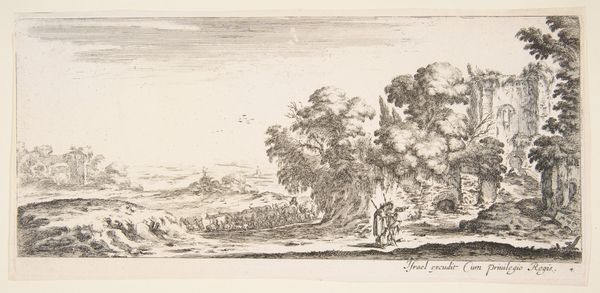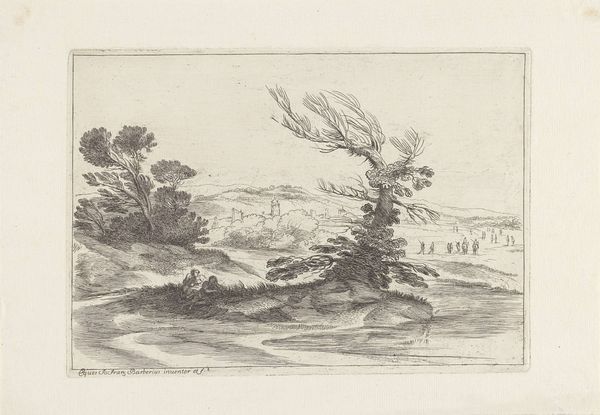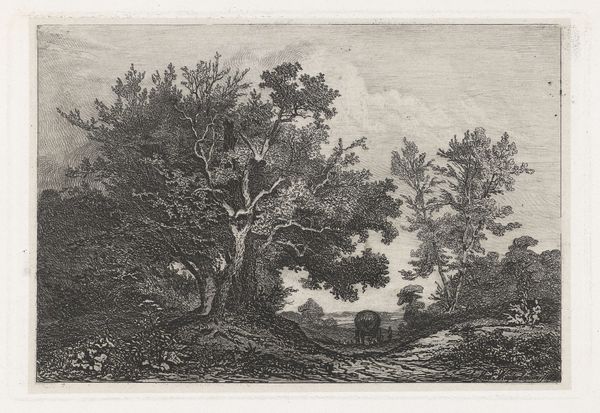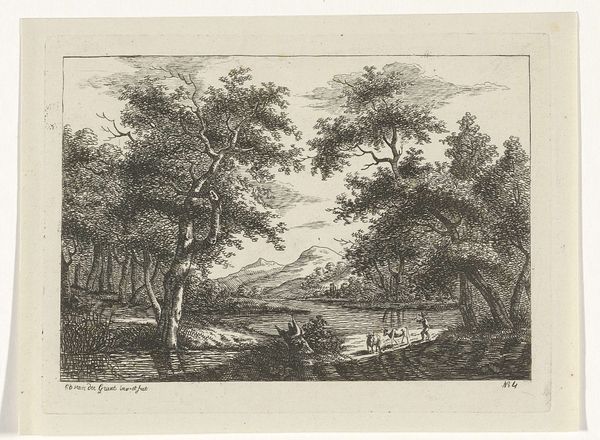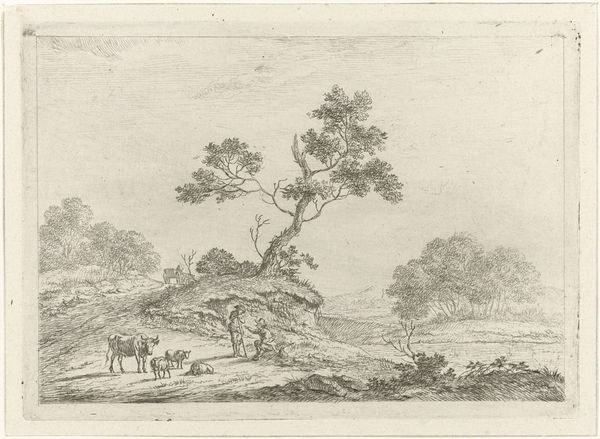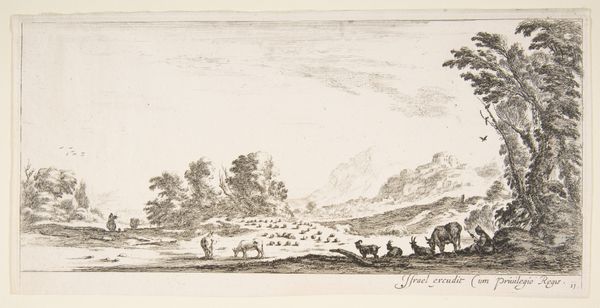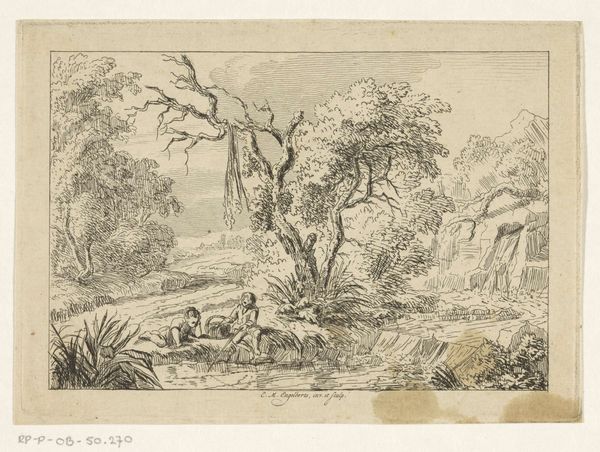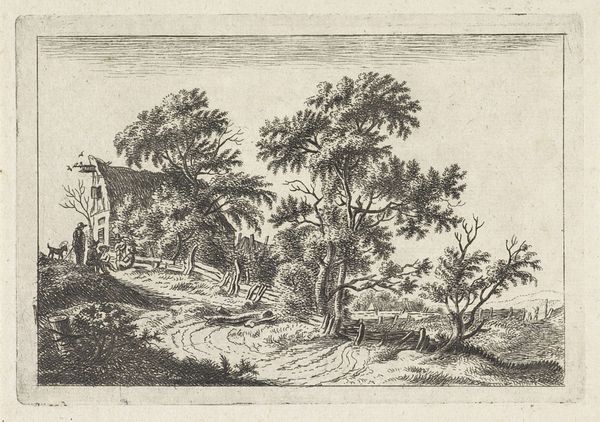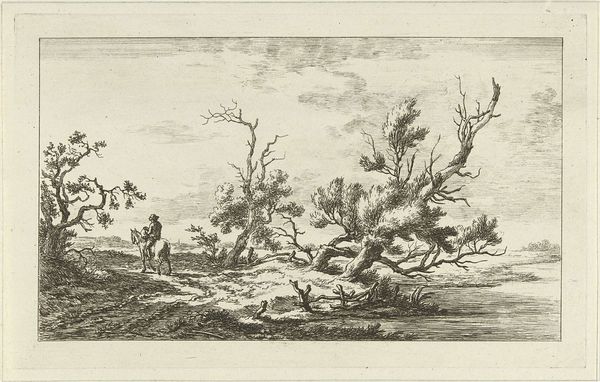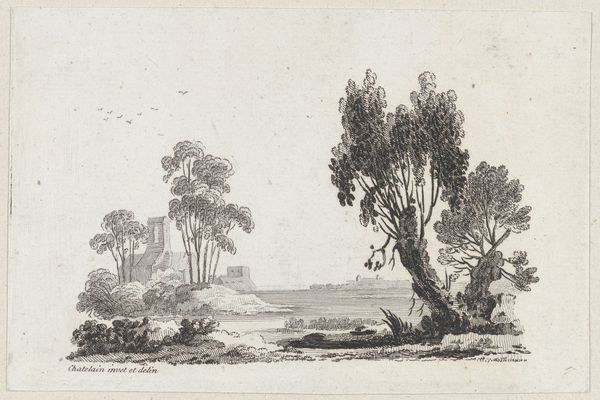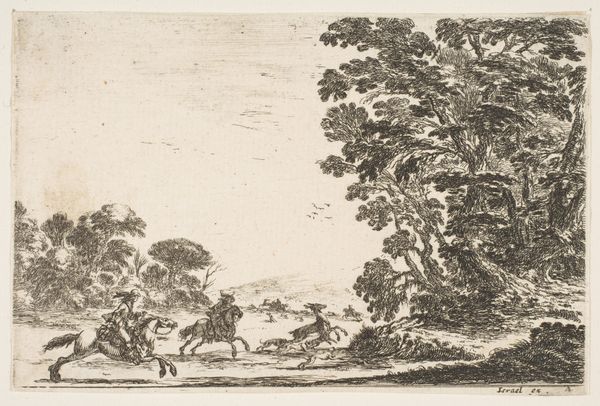
Plate 6: a fisherman carrying a net to left, two horsemen in a stream to right, a tree in center, a castle in ruins to right in the background, from 'Various landscapes' (Divers paysages) 1636 - 1646
0:00
0:00
drawing, print, etching, ink, engraving
#
drawing
# print
#
etching
#
landscape
#
ink
#
horse
#
men
#
genre-painting
#
history-painting
#
engraving
Dimensions: Sheet (trimmed): 4 13/16 × 10 3/8 in. (12.2 × 26.3 cm)
Copyright: Public Domain
Curator: Stefano della Bella created this etching, "Plate 6: a fisherman carrying a net to left, two horsemen in a stream to right, a tree in center, a castle in ruins to right in the background, from 'Various landscapes' (Divers paysages)," sometime between 1636 and 1646. Editor: The scene feels almost like a faded memory. There’s a certain stillness, a melancholy that settles with the muted tones and crumbling castle. The vast landscape really dwarfs the figures within it. Curator: It’s interesting that you mention memory. Ruins, like the castle we see here, frequently functioned as symbols of transience, of the passage of time and the impermanence of human endeavors. The lone fisherman mirrors this in a way, a timeless image of humanity working within nature. Editor: Absolutely. I am intrigued by this solitary figure of the fisherman juxtaposed with the two horsemen. One evokes the working class, struggling with the natural elements, the other the leisure class passing them by, literally, riding through water as a sort of picturesque entertainment. Is Della Bella critiquing social hierarchy, here? Curator: Della Bella often worked for wealthy patrons; that must be factored in. I wonder if he is creating more of a balanced picture. See how the tree in the center, anchoring the scene, rises from a similarly central earth mound? In one way, it visually elevates the fisherman so he is on the same eye level as the mounted horsemen. Both activities – fishing and riding – seem ennobled by the vastness of nature. Editor: Hmm, but those ruins remain, casting a shadow on everything. Doesn’t the presence of decay undercut any sense of stability or permanence the natural world may seem to offer? Curator: Perhaps, but ruins can also symbolize resilience. After all, they stand as evidence of past struggles and survival. Maybe that crumbling facade signifies the enduring spirit of those who came before. It all remains connected to the natural, larger environment. Editor: That is a hopeful reading! Thinking about the broader historical context—Europe was in the throes of the Thirty Years' War at the time. Considering this historical moment helps ground that sense of foreboding I had noticed at first. Curator: Right, it is not so simple as only idyllic pastoral life and a simple symbol of the march of time. War has left its mark on these characters and places, in overt or subtle ways. Editor: This piece has given me a lot to consider about how we interpret seemingly idyllic art against the realities of social conditions. Curator: It’s amazing how much an image can communicate across centuries once we start to decode its symbols.
Comments
No comments
Be the first to comment and join the conversation on the ultimate creative platform.
